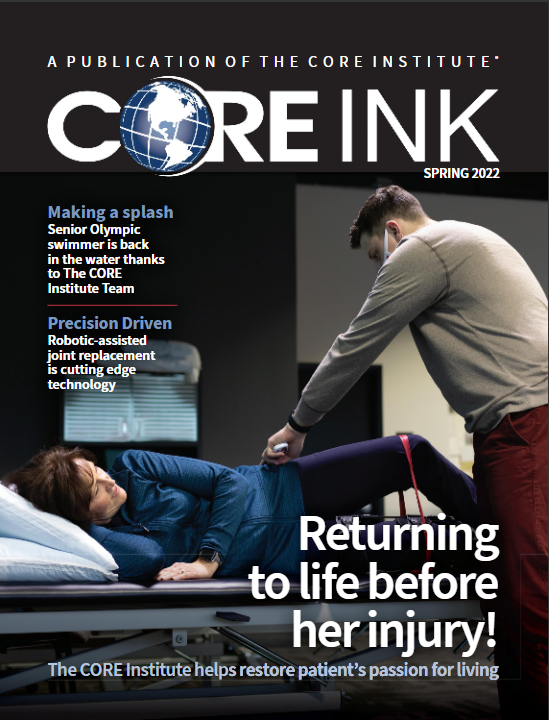When Suzanne Stiles decided it was time to have her left knee replaced, she had run out of other options. Like most people who opt for total knee replacement, she’d tried bracing and cortisone shots with limited to no relief. The pain was excruciating, constant, bone-on-bone aggravation. Simple tasks became complicated and staying active was nearly impossible.
And while merely returning to everyday life would be motivation enough for nearly anyone, Stiles had an extra incentive driving her to a successful post-surgery recovery: a bucket-list vacation that required two good knees and a lot of persistence.
“We were really set on doing this trip,” Stiles, 76, said. “It was five national parks in Utah. I worked hard to get to the point where I’d feel comfortable enough to go.”
Climbing higher
Less than six months after David Markel, MD, a Fellowship Trained Hip and Knee Surgeon at The CORE Institute, replaced her left knee, Suzanne was hiking, exploring and enjoying an active vacation that would tire even the most active vacationers. She and her husband hiked 17.5 miles and climbed 54 flights of stairs. She credits a good surgeon, and commitment to physical therapy, for her success.
“One of the things that people need to understand is that this is a really good and proven procedure,” Dr. Markel said. “Having a good mindset as you go through those first couple weeks and knowing that you’re going to come out of it, you can do so much better. Suzanne had a goal and her goal was not to sit around. She wanted to go hiking.”
In it for the long run
Stiles’ recovery can serve as an inspiration for other prospective knee-replacement patients. She was aware of how arthritis in her knee had affected her mobility and she prepared for the surgery by taking water aerobics classes. And post-surgery, she committed to physical therapy because she knew she’d benefit in the long run.
“It was painful afterward, but I have a pretty good pain threshold and I got through it,” she said.
Managing expectations
Stiles’ story is important, Dr. Markel said, because it shows how baby-step improvements post-surgery turn into remarkable advancements months later.
“The first couple weeks can be hard,” Dr. Markel said. “At six weeks, you might be at 70 percent and you’ll be functional, doing many things. You might be back at work. Then from six weeks to three months is a pretty fast ramp. You’re probably better than you were (before surgery).”
Today, Stiles is back to her old self. She routinely goes hiking in a state park near her Northville, Michigan home. There are plans for snowshoeing this winter and more vacations and adventures are on the horizon—trips for 2020 were canceled because of international travel restrictions, not her knee.
“The knee wasn’t a problem at all,” she said of her national parks adventure in Utah. “Even today, I’d never know I’d even had it replaced. I’m very grateful.”
SUBSCRIBE TO CORE INK NEWSLETTER
Sign up to receive stories and information from The CORE Institute, including expertise from our providers and news about the latest technology advancements helping our communities.

